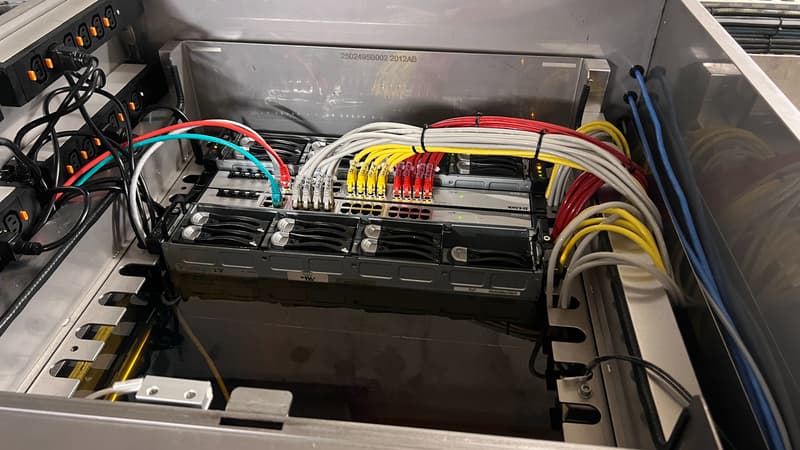Heating houses with computer servers? Some are already there. In Europe, initiatives to make better use of these large heat generators are even accelerating. According to Wall Street JournalThe European Union is working on a new energy efficiency directive to force data center operators to consider using the heat emitted by their system to heat homes and offices.
The challenges are many. Amazon, Microsoft and Apple have announced plans to connect major data centers to district heating systems in Ireland, Denmark and Finland. A project paralyzed by the energy crisis. For its part, Google has indicated that it is evaluating the possibilities of recovering heat from its data centers located in Europe. Finally, Facebook recovers heat from its data center in Denmark.
And France is not far behind, the government has implemented tax incentives and aid for data centers that value the heat produced because these systems consume a lot of energy. Organizations such as the Ecological Transition Agency (Ademe) support companies in the sector to develop their system.
Servers to heat the shower
This is the case of NeutralIT who was entitled to a grant after submitting an application.
Christophe Perron is co-founder of the company NeutralIT, formerly Stimergy, co-founded in 2019, which is an alternative digital application host. At the foot of the RER B Laplace stop, in Arcueil, is a residential building with 30 apartments, built two years ago. The building houses, in its basements, a rather unusual system for the place: computer servers that supply 50 to 60% of the hot water to the inhabitants.
Address the lower levels, next to the garages, more precisely in the boiler room. The room is hot and there is constant background noise. In the background, an imposing gray box, which is nothing more than a mini data center. Inside, 8 servers that host data and applications and digital corporate websites.
Specifically, the servers emit heat, which is recovered to provide hot water. “In detail”, continues Christophe Perron, “the servers are immersed in an oil that absorbs heat. The water is sent through the pipes and then stored in a tank. The inhabitants therefore draw their hot water of the tank”. In this way, the mechanism recovers energy that would otherwise not be used.
The system is “a virtuous circle” since by removing preheated hot water, the inhabitants come to cool the servers. Christophe Perron claims that the occupants reduce their annual bill by between 150 and 200 euros compared to a conventional system. Installed at the time of building construction, the social landlord signed a contract with NeutralIT. The company now has 14 installations like these in buildings, especially in the Paris region, but also in Lyon and Lille.
The co-founder sees an increase in requests from donors, “but companies still seem reluctant to adopt this system.” He predicts, however, that with rising energy prices, demand should pick up very quickly.
Reduce your carbon footprint
Even if companies haven’t taken the plunge yet, some appear to be early adopters. In Paris, near the Place de la Bastille, a fully glazed three-story building hides behind a discreet façade. It is here, in its new facilities, where the French production and animation company TeamTo has just moved. The entire project was designed “to reduce the company’s carbon footprint by 63%,” enthuses Guillaume Hellouin, founder of TeamTo. He founded his animation studio 18 years ago that produces series and feature films in 3D animation for children and families.
The idea with these new spaces is “to create an environment conducive to the development of talent, but also to control our carbon footprint”, specifies the founder. After a little (big) tour of the facility, head to the heart of the reactor: the data center room. TeamTo has its own data centers that it has chosen to join with the central units of the workstations “so as not to have to dissipate heat.”
Adopt the most appropriate system
Instead of using an external service provider, having your own data centers “serves both to control your energy consumption, to have control over it and to be able to guarantee data security,” says Jean-Baptiste Spieser, technical director of TeamTo.
Above all, the animation studio has chosen not to reinject the heat emitted by its data centers into its heating system. Instead, the team opted for server cooling called free cooling. “We don’t recover the power that the data centers produce because in the Paris region it doesn’t make much sense, there are very few days a year that we need to heat. It would be a very cumbersome system to set up.” for a very marginal use”, explains Guillaume Hellouin.
It also includes the recommendations of Ademe that recommend using the free cooling: This technique consists of capturing ambient air and using it without refrigeration to lower the temperature of the data center. As long as the outside temperature is less than or equal to 15 degrees, the free cooling is optimal When the temperature rises, TeamTo uses the cold network of the City of Paris that recovers water from the Seine to generate cold. “So this system is highly optimized in terms of energy consumption”, continues the founder.
Before installing such a mechanism, the technical director obviously did simulations. Thus, when the company needs to heat itself, it uses the Paris City Hall’s hot network that produces heat from household waste. TeamTo was rewarded for its efforts as the company was the winner of two calls for projects.
A few years ago, TeamTo servers, connected to the NeutralIT system, were also used to heat the Butte aux Cailles swimming pool, in the south of Paris. And new projects keep coming up. On September 16, Smirec, the Seine-Saint-Denis district heating union, signed an agreement with Equinix, the US data center giant. The heat produced by the company’s new data center will be used to partially heat the future ZAC de la Plaine Saulnier and the Saint-Denis Olympic Aquatic Center in 2024.
Source: BFM TV


